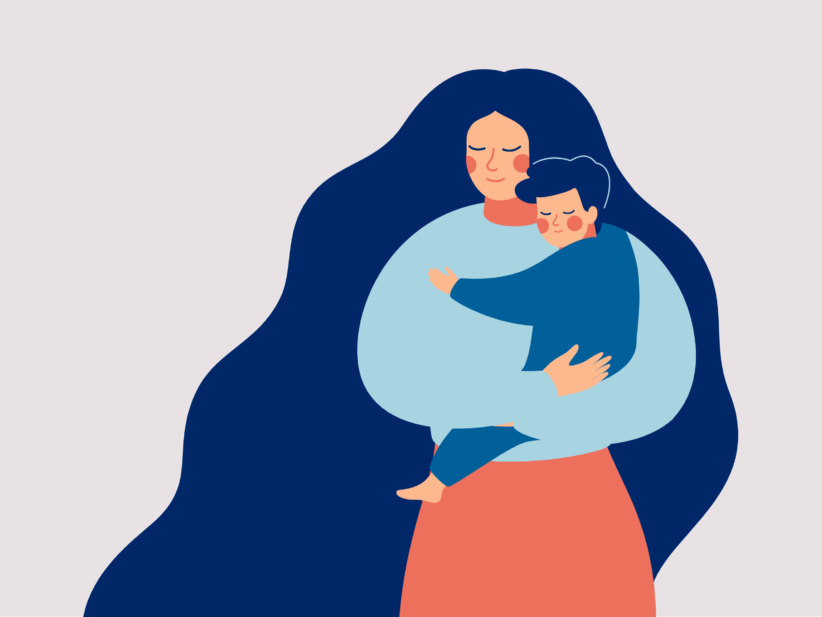Doctors began diagnosing children and adolescents with bipolar disorder in the mid-1990s. This stemmed from controversial studies done by doctors at Massachusetts General Hospital, Harvard Medical School’s primary teaching hospital. At the hospital were psychiatric clinics in which doctors were observing children diagnosed with attention deficit hyperactivity disorder, whose conditions were not improving by taking stimulants, psychoactive drugs that improve concentration and focus for sufferers of the disorder. Support and information for parents of children diagnosed with bipolar disorder was limited at that time. Today, there are several organizations working with medical professionals to help families understand the diagnosis.
According to “The Diagnostic and Statistical Manual of Mental Disorders,” a book professional psychiatrists use to diagnose and treat mental illnesses, bipolar disorder is a psychiatric condition in which people experience intense mood swings. When adults are diagnosed with bipolar disorder, also known as “manic depression,” they experience energetic, excitable moods followed by lethargic, depressive episodes. The length of time for each mood period should last at least a week.
One of the doctors at Massachusetts General Hospital, Dr. Janet Wozniak, said that these children were bipolar because they experienced mood episodes many times in one day, and that their uncontrollable outbursts of anger, such as violent hitting and kicking, were even more severe than a kid having a temper tantrum. In her book, “Is Your Child Bipolar?,” she describes a bipolar child as having a “five pointed star” of mood changes — irritability, rage, depression, euphoria, and then behaving as a “typical” kid.
“Mania is characterized by dramatic moods of irritability and euphoria. The children (and many adults) are often ‘labile’ in their mood and can change minute to minute. Most parents I see describe (their children as having) what they call ‘rapid cycles’ of changes throughout the day; flipping from rage, to lower level irritability, to sadness and to euphoria (goofy, giddy, silly, high, energized). Parents see all points of the star for varying degrees, cycling in complicated ways from day to day, week to week, month to month, season to season,” she wrote.
Wozniak is a member of the Scientific Advisory Council at The Balanced Mind Foundation, an organization that was formed in 1999 by a group of parents who had found each other on the internet because so few resources existed at the time for parents of these children. Based in a suburb of Chicago, the organization’s services are available to anyone with internet access at www.thebalancedmind.org.
The website contains a wealth of information concerning bipolar disorder: a library, research studies, a bookstore, and an education corner. Since the people on the organization’s Scientific Advisory Council represent leading researchers in the field for childhood mood disorders, the information provided on the website is constantly being updated as soon as new findings about bipolar disorder are published.
The Balanced Mind Foundation also has online forums, blogs, and support groups. It has a feature called “Find a Professional Resource,” where anyone can look for a physician, psychologist, legal service, or other facility within a five-mile radius of the city in which they live within the United States.
“We originally started out our mission to address bipolar disorder and then a year ago we expanded our mission to include all mood disorders. Mood disorders are the grouping of either bipolar disorder or depression,” said Susan Resko, executive director at the Balanced Mind Foundation.
Since its formation in 1999, the organization has experienced a drastic growth in its membership.
“We do not treat children here, so we are not aware of diagnosis rates, but I can tell you that the number of families who have come to our organization has just exploded. We have over 500,000 unique visitors who come to our website every year,” Resko recounted. “There are 40,000 families on our mailing list and over 5,000 families that participate in one of our support programs. From that perspective, it’s been a tremendous increase.”
Another organization with a more global slant to its mission is the International Bipolar Foundation, which is based in San Diego and can be found at www.internationalbipolarfoundation.org.
“We are present in 25 countries at this point, and all of our services and programs are free and all of them are globally accessible, so if we hold an event or lecture here in San Diego, we videotape the lecture and then we upload it to the website,” Muffy Walker, president of the International Bipolar Foundation, explained.
It has a global outreach and referral service for anyone looking for a doctor, advocate, or lawyer to help with Social Security disability. The Foundation also has a buddy program in which the organization will take someone new to the diagnosis of bipolar disorder and connect him with someone who is more experienced with the illness. Besides holding programs for sufferers of the disorder, the organization also has resources for families and caregivers.
Its Scientific Advisory Board consists of the country’s leading scientists and psychiatrists. It also has a Consumer Advisory Board made up of people diagnosed with bipolar disorder who make recommendations to the Foundation about what programs are in need and worthy of the its funding. The Foundation has given more than $250,000 to support mood disorder research
The Foundation just published a book called “Healthy Living with Bipolar Disorder,” which is free to anyone in the world. An interesting aspect about the book is that it discusses how the illness is treated in other countries such as Peru, Kenya, Canada, the U.K. and Australia. The book is organized into a three-ring binder, so when data becomes outdated, the consumer takes the pages out of the binder and adds new pages with the updated information.
Currently, there is controversy in the U.S. about over-diagnosing children as being bipolar. Ever since Wozniak’s initial diagnosis in 1995, there has been a 4,000 percent increase in the number of children and adolescents diagnosed with bipolar disorder, according to a study published in the Archives of General Psychiatry, which measured national trends in outpatient visits that resulted in a diagnosis of bipolar disorder.
There is no denying, however, that there are children who suffer from severe psychiatric illnesses and are in need of professional treatment. As parents recount their own experiences of caring daily for their children who have been diagnosed with bipolar disorder, their stories are harrowing.
One mother from Kentucky recounted raising her son who as a child “would not sleep for days, and then suddenly he would sleep all the time. He would be happy one minute, and in tears or tearing up things and biting me the next minute.” She says he also got into a lot of trouble at school by arguing and fighting with other people.
The family took the boy to see different doctors until finally one psychiatrist labeled the boy as having attention deficit hyperactivity disorder, bipolar disorder, and oppositional defiant disorder.
“You never feel comfortable with your child being diagnosed with (bipolar disorder), but you do feel relieved, because once diagnosed, then maybe he will get the appropriate medications,” the mother remarked.
From the age of 4 until his present age of 16, her son “has been placed on many medication cocktails,” says his mother. Although he does suffer some side effects, the medications have been able to alleviate some of his symptoms.
“On certain medications, he has shown much improvement in controlling the mood swings,” the mother recounted. “I am very thankful that at least he can get some relief and live a better quality of life through use of the medications.”
Another mother from Chicago talked about her 8-year-old son with a very high IQ, who also suffers from sensory processing disorder, a neurological disorder in which a person has difficulties absorbing and processing sensory information from his environment. He has been on at least 10 different psychotropic medications and was also identified as having severe mood dysregulation. His family ultimately traveled to another state to see a well-known psychiatrist who diagnosed the boy as being bipolar, which the family felt relieved to hear.
With numerous resources at her disposal for caring for her son, the boy’s mother feels hopeful about his future.
“He has a ton of family support and thankfully we’ve had the ability to get him the help that he needs,” she reflected. “And he is very smart himself, so I think he has a good a chance as anyone, given the hand he was dealt with.”
Allison Plitt is a freelance writer who lives in Queens with her husband and daughter. She is a frequent contributor to NY Parenting Media.





















